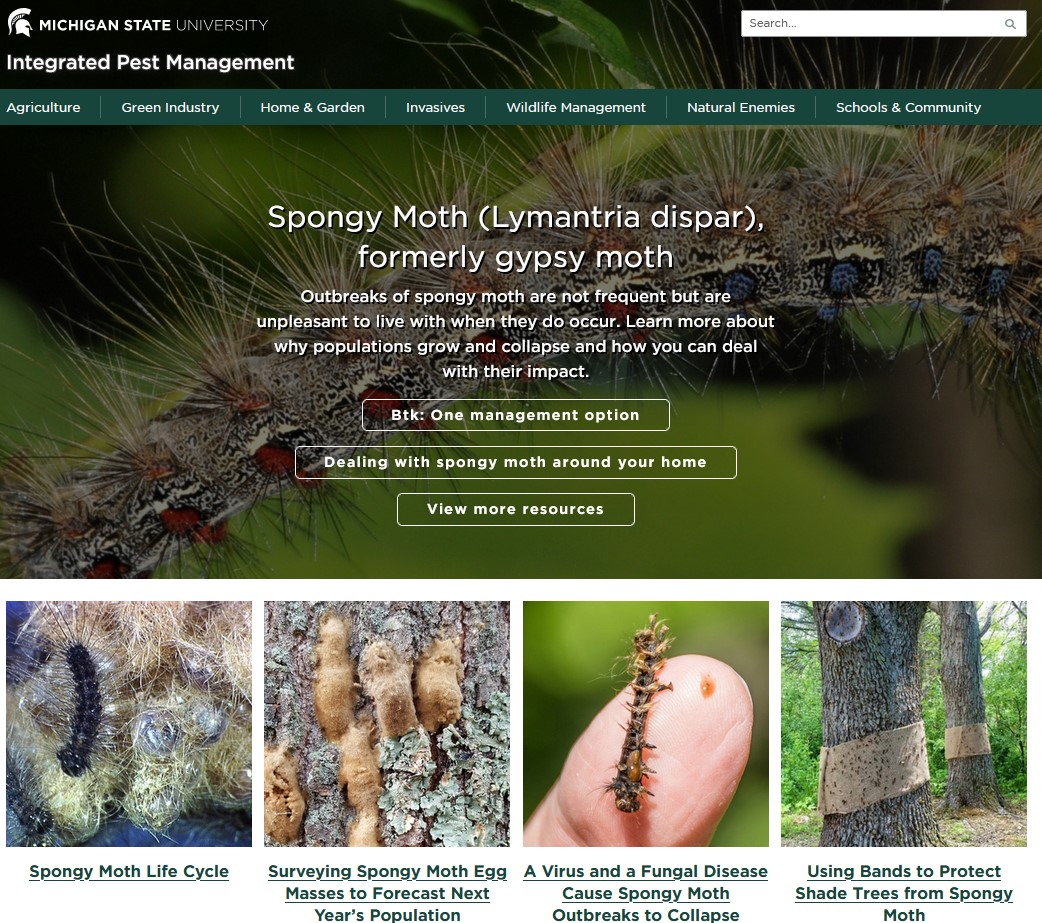Spongy moth, formerly gypsy moth, season starts soon
Visit a newly revised MSU Extension website to learn about spongy moth, formerly gypsy moth, and what you can do to protect your trees this summer if you live in an area experiencing an outbreak.

If your area experienced an outbreak of spongy moth, formerly gypsy moth, last summer, you may want to visit the newly revised Michigan State University Extension Spongy Moth website with information on what to expect this summer and what you can do to protect your trees.
Many Michigan residents know first-hand how annoying and downright unpleasant it can be to live in an area during an outbreak of spongy moth. The most recent outbreak of this invasive insect began in a few regions of the state in 2019, affected more areas in 2020, and outbreaks were common in 2021 across much of Lower Michigan and even in some locations in the Upper Peninsula.

Caterpillars hatch from eggs in May then feed on the leaves of oaks and many other types of trees for the next six to eight weeks. When an outbreak occurs, large hairy caterpillars are abundant until early or mid-July. Caterpillars, the immature stage, consume leaves on oaks, birch and other favorite host trees, often causing nearly complete defoliation.
“High numbers of caterpillars and the frass (excrement) they produce as they feed can disrupt outdoor activities and upset residents in affected areas,” reported Julie Crick, MSU Extension natural resources educator in Roscommon County. “I try to focus on the benefit to birds and other wildlife that take advantage of all the caterpillars as a temporary food source.”
Options for protecting shade trees near homes might include using Btk to control young caterpillars and using hiding or barrier bands when caterpillars are older. Outbreaks usually collapse in three to four years and sometimes sooner thanks to natural enemies, particularly two diseases that affect the caterpillars. James Wieferich, a forest health specialist for the Michigan Department of Natural Resources, noted that some outbreaks, mainly in parts of northern lower Michigan, collapsed last summer. “However,” he said, “other regions of the state have plenty of egg masses and will likely experience another year or two of abundant caterpillars and defoliation.”
A wealth of information about spongy moth is available on the newly revised and updated MSU Spongy Moth website. Resources include options to help reduce the number of caterpillars and protect trees around homes, information about the diseases and other natural enemies that affect this insect, and what to expect when trees have been defoliated. Information can be viewed online or downloaded, free of charge.



 Print
Print Email
Email
